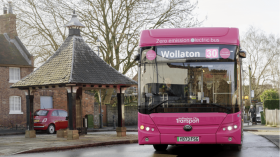Sue Robb of 4Children talks to Julie Laughton and Alison Britton from the Department for Education about the role of childminders in delivering the 30 hours free entitlement.
CO2 use of every local council in England published
Local councils in England have had their CO2 use published, after the amount they produced by powering and heating their buildings was measured.
Buildings such as libraries, schools and leisure centres were measured, as well as emissions from business travel, fleet vehicles and even refuse trucks.
The emissions data collected from local authorities across England for the 2008/2009 financial year shows that East Cambridgeshire, East Northamptonshire, Broadland, Isles of Scilly and West Somerset local authorities were the lowest emitters.
Birmingham, Hertfordshire, Lancashire, Leeds and Hampshire local authorities were the highest emitters.
In total, local authorities were responsible for 8.3 million tonnes of CO2.
The data also shows how much electricity local authorities have generated themselves, with over 600,000 KWh generated from onsite wind or solar power, and 33,800,000 KWh from onsite biomass.
Chris Huhne, Secretary of State for Climate Change said: "By calculating their own emissions and the estimated costs of energy use, local councils will be able to identify how to save emissions and save money."
"These new statistics should put energy wastage and energy efficiency at the forefront of the minds of councillors and council officials."
Further information:
Department of Energy and Climate Change
Company Focus
Just Lanyards is a subsidiary name of Gifts 2 Impress Limited, who have been trading for over 25 years, we therefore pride ourselves in having endless experience covering all aspects of the promotional merchandise industry.
Event Diary
UKREiiF has quickly become a must-attend in the industry calendar for Government departments and local authorities.
The multi-award-winning UK Construction Week (UKCW), is the UK’s biggest trade event for the built environment that connects the whole supply chain to be the catalyst for growth and positive change in the industry.
Supplier Profiles
Geo Energy
At GeoEnergy Design, we're on a mission to disrupt the traditional way heating and cooling ha
Latest Features
Professor Harith Alani, director of the Knowledge Management Institute at the Open University explains how AI can be used for good and bad.
Alex Lawrence, head of health & social care, techUK sets out techUK’s Five Point Plan for CareTech.

















